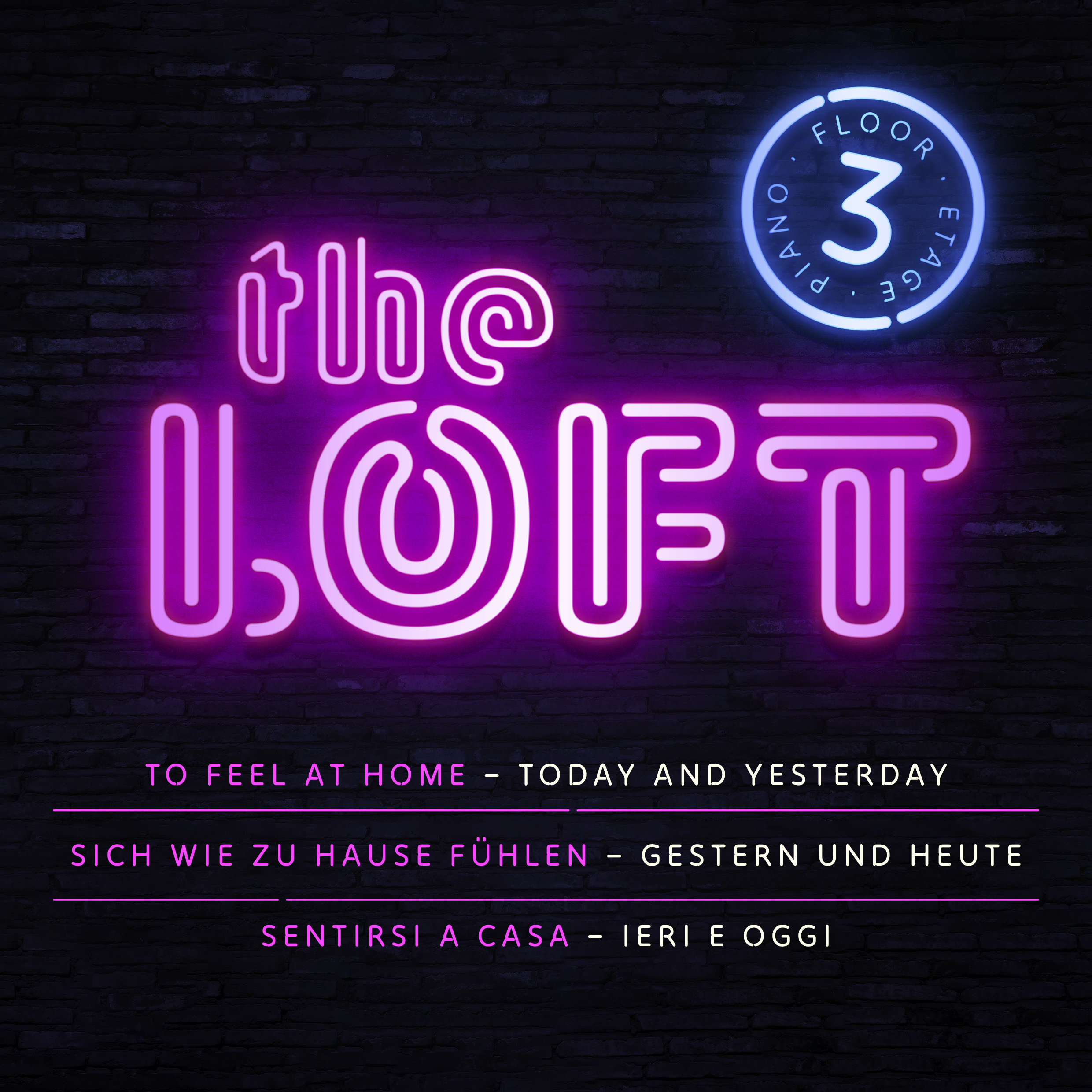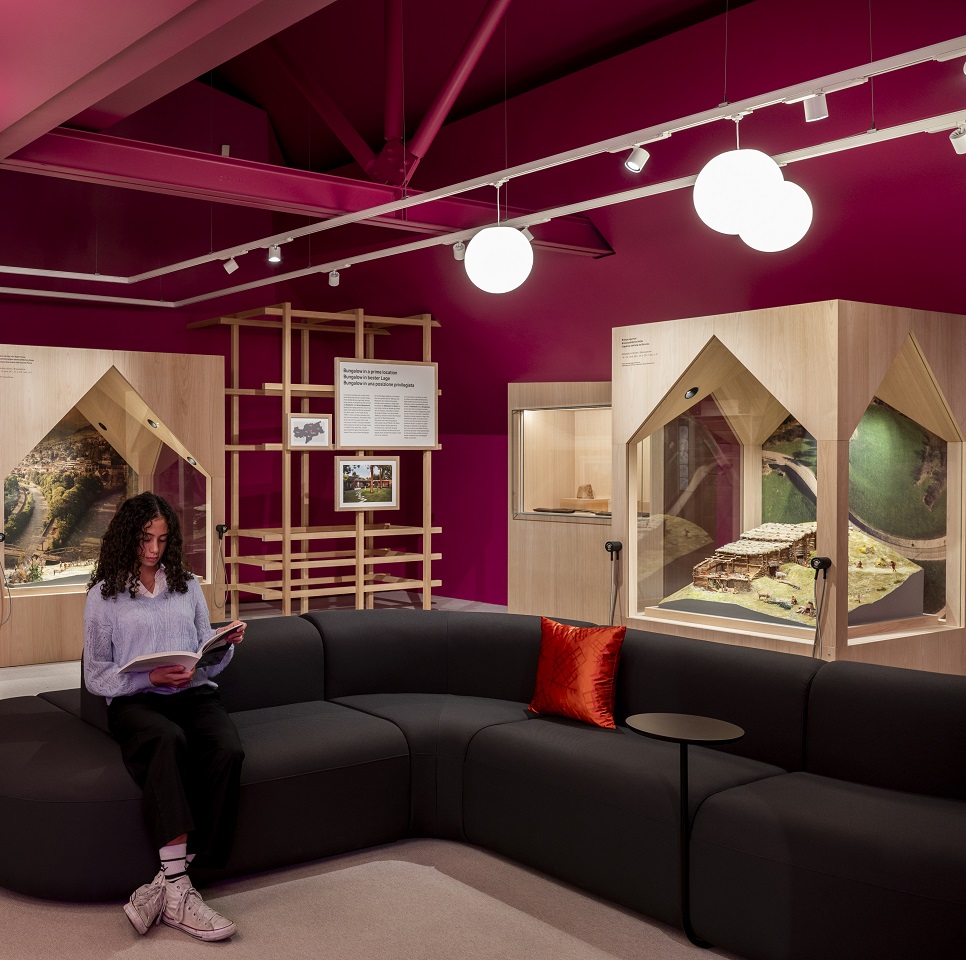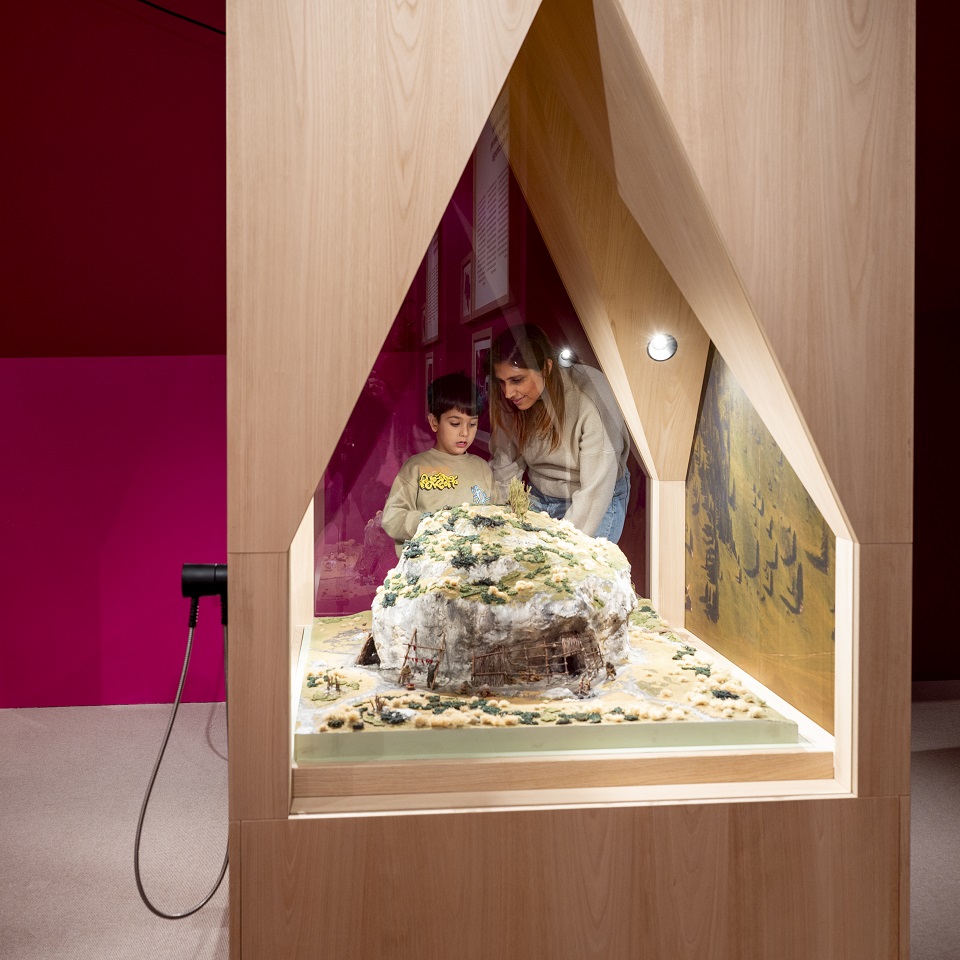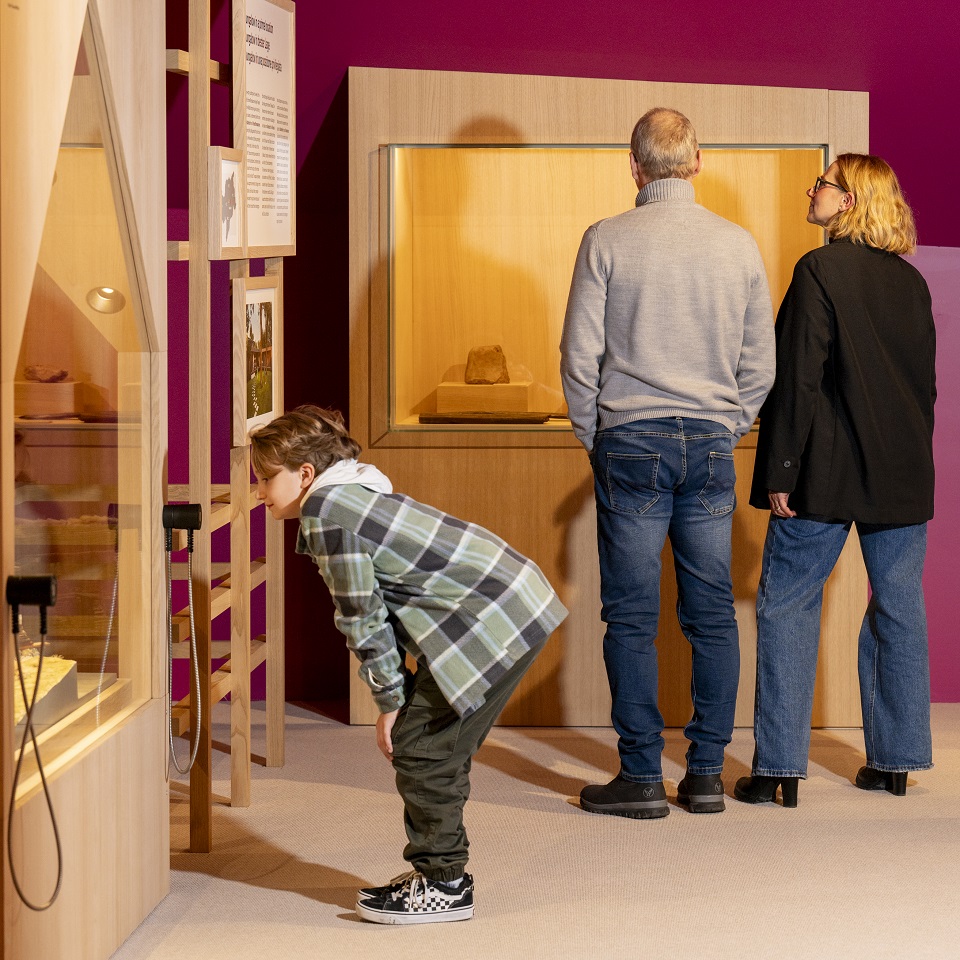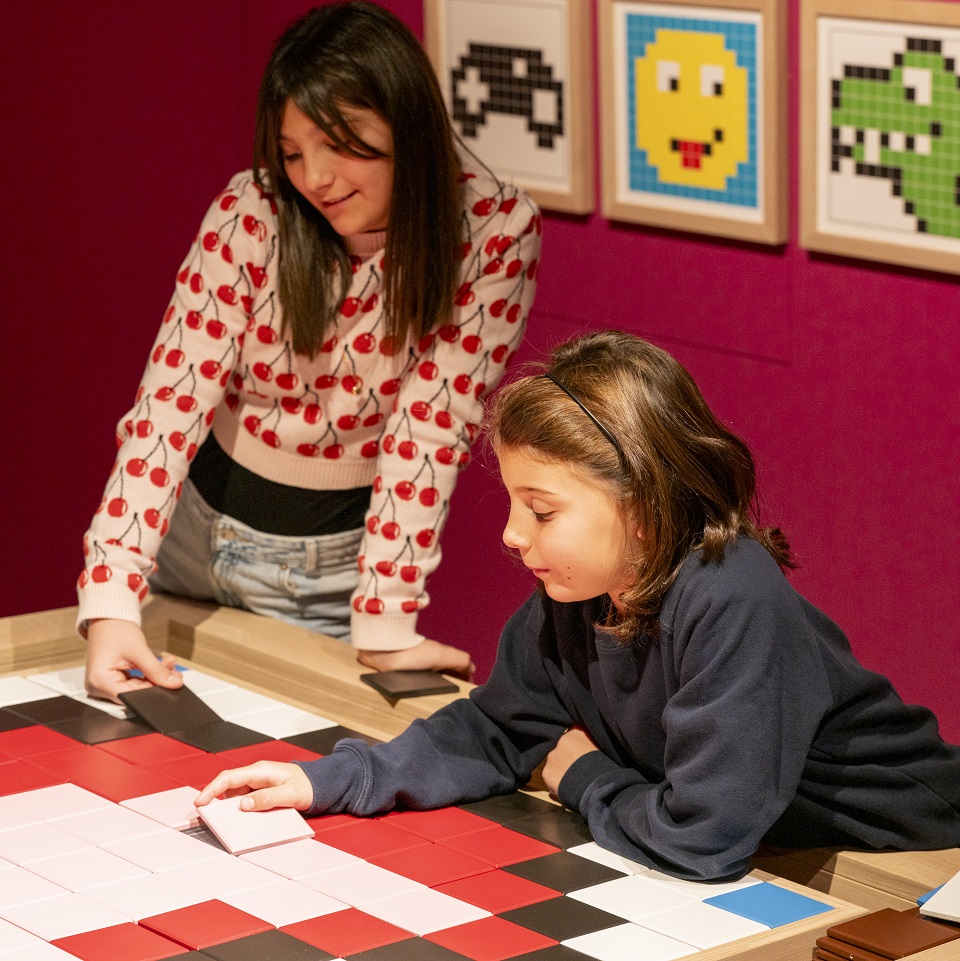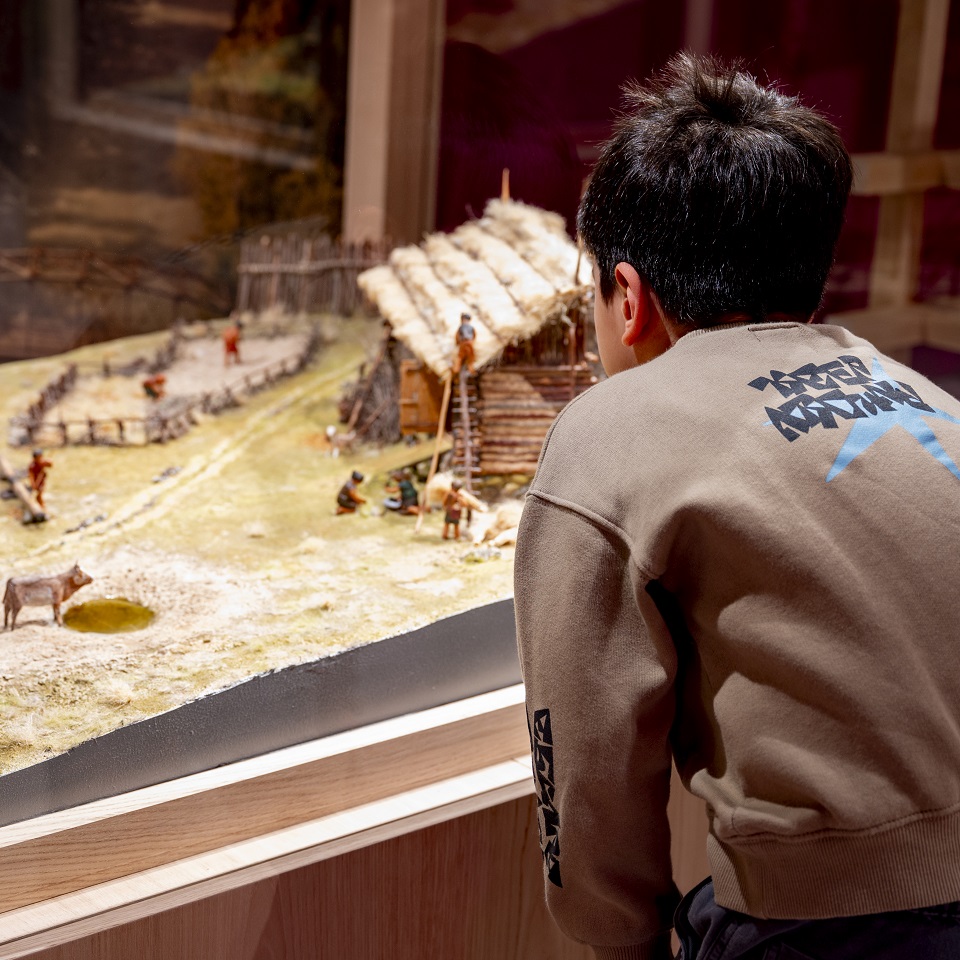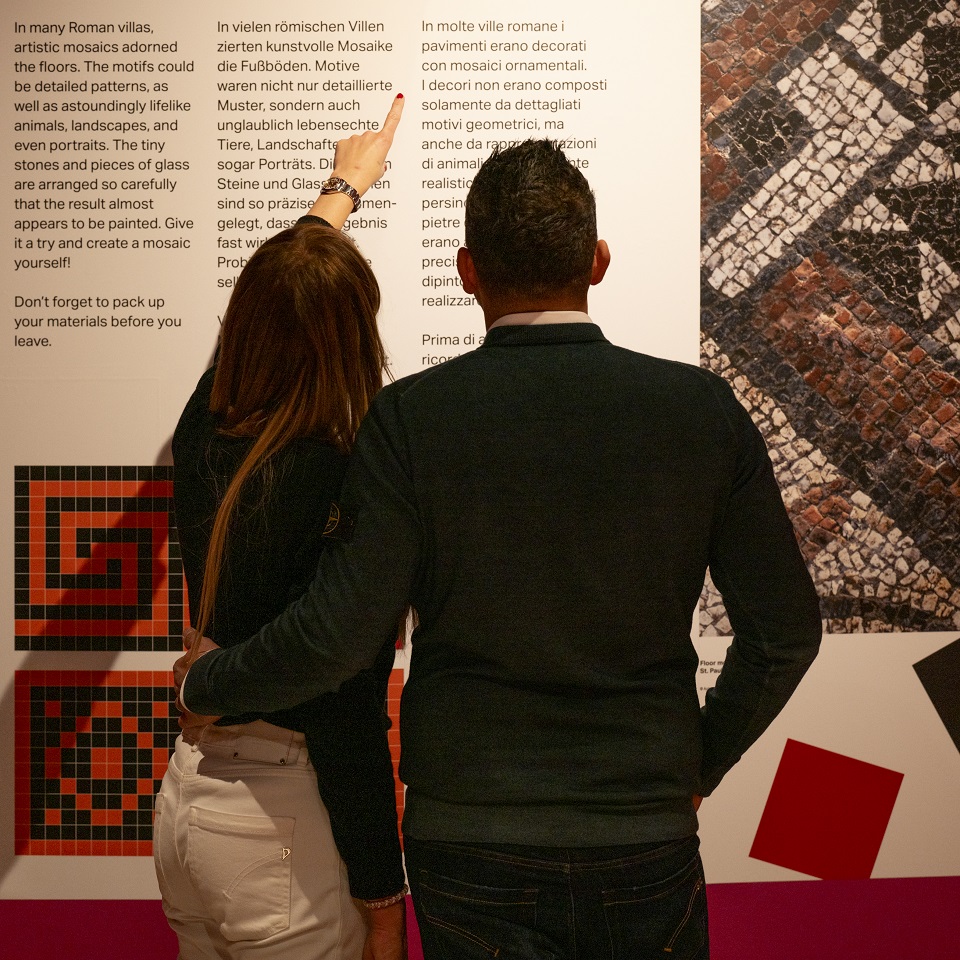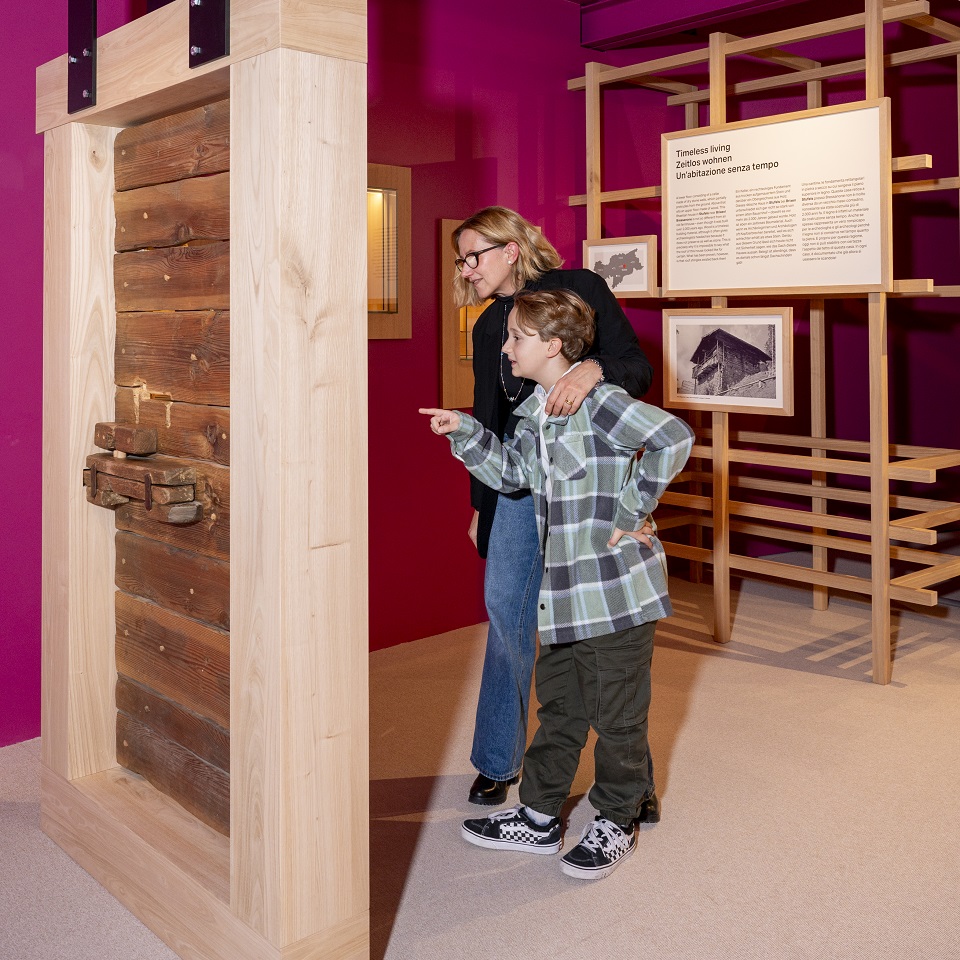THE LOFT
26.11.2024 – 02.11.2025
THE LOFT
To feel at home – today and yesterday
From nomadic dwellings to relaxing living room comfort: In THE LOFT we present several types of shelters from South Tyrol that have been reconstructed by archaeology, ranging from the Mesolithic to the Roman Era. Accommodation of the past is compared with modern living conditions. Comfortable seating in THE LOFT invites you to relax after your museum visit, chat, do nothing, or be inspired by interactive stations about life in the past. Feel at home in THE LOFT!
Housing over the course of millennia
There is a world of difference between having a protective roof over one’s head and relaxing comfortably on a living room couch – and it was a long time before nomadic dwellings developed into places where people feel at home.
Feeling at home
Here in the Archaeology Museum, we have also created a place to relax. In THE LOFT our visitors can rest their feet and plan where to go together next. At the same time, they can learn a bit about how people used to live. In THE LOFT we present several types of houses from South Tyrol that have been reconstructed using archaeology and which range from the Mesolithic to the Roman Era.
Housing models
It is difficult for archaeologists to draw conclusions about a home just by looking at soil discoloration from eroded or filled holes in the ground, which are called post holes. To better imagine the lives of our ancestors, miniature models were created for the museum in 1997/1998. They were based on traces in the soil, knowledge of the building materials from the time, supplemented by structural analyses, and a dash of imagination.
Mesolithic summer hunting camp
Plan de Frea, Wolkenstein in Gröden / Selva di Val Gardena (9th–6th mill. BC)
Bronze Age hut
Albanbichl, Brixen / Bressanone (Middle Bronze Age 16th–14th cent. BC)
Two-story Iron Age house
Stufels, Brixen / Bressanone (Middle Iron Age, 6th–5th cent. BC)
Roman rest area Sebatum
St. Lorenzen / San Lorenzo di Sebato (1st–5th cent. AD)
Roman villa rustica
Puenland, St. Lorenzen / San Lorenzo di Sebato (3rd–5th cent. AD)
Further press information under the following LINK.
- THE LOFT (c) South Tyrol Museum of Archaeology
- THE LOFT (c) South Tyrol Museum of Archaeology / Manuela Tessaro
- THE LOFT (c) South Tyrol Museum of Archaeology / Manuela Tessaro
- THE LOFT (c) South Tyrol Museum of Archaeology / Manuela Tessaro
- THE LOFT (c) South Tyrol Museum of Archaeology / Manuela Tessaro
- THE LOFT (c) South Tyrol Museum of Archaeology / Manuela Tessaro
- THE LOFT (c) South Tyrol Museum of Archaeology / Manuela Tessaro
- THE LOFT (c) South Tyrol Museum of Archaeology / Manuela Tessaro


